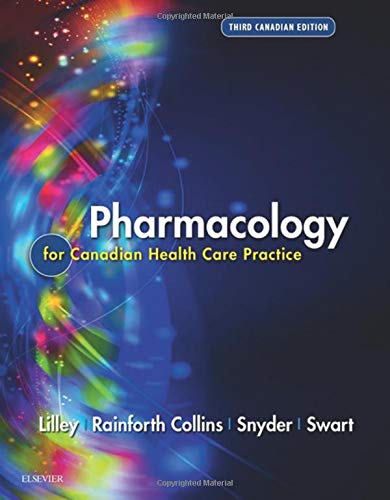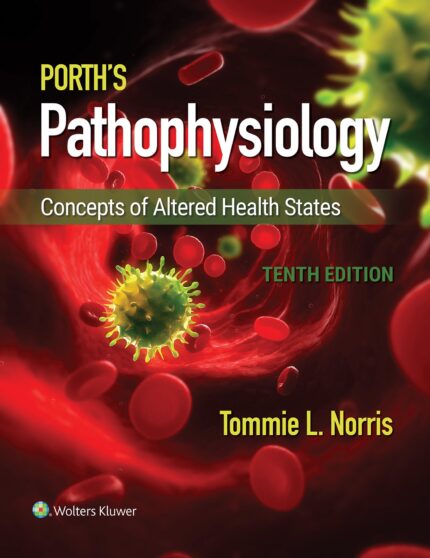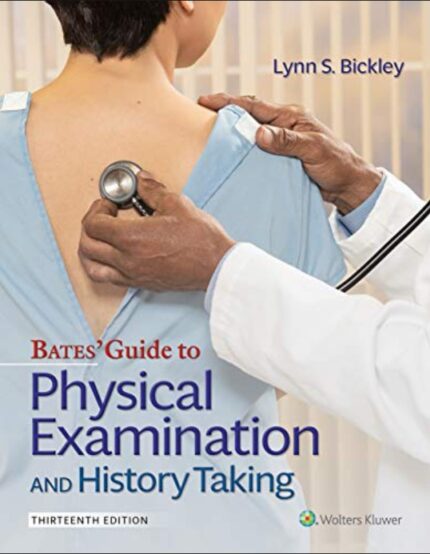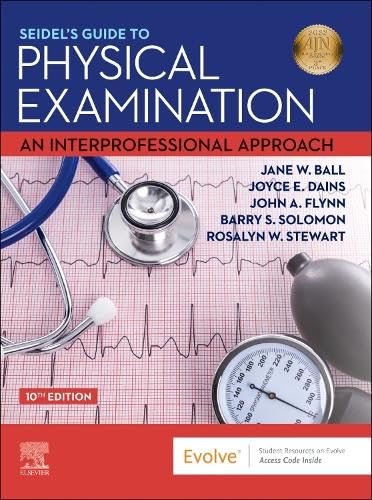Test Bank for Physical Examination and Health Assessment CANADIAN 3rd Edition
Test Bank for Physical Examination and Health Assessment CANADIAN 3rd Edition
Test Bank for Physical Examination and Health Assessment CANADIAN 3rd Edition
Physical Examination and Health Assessment CANADIAN 3rd Edition – Test Bank
Physical Examination and Health Assessment
Chapter 01: Evidence-Based Assessment
MULTIPLE CHOICE
1. After completing an initial assessment of a patient, the nurse has charted that his respirations
are 18 breaths per minute and his pulse is 58 beats per minute. These types of data would be:
a. Objective
b. Reflective
c. Subjective
d. Introspective
ANS: A
Objective data are what the health professional observes by inspecting, percussing, palpating,
and auscultating during the physical examination. Subjective data are what the person says
about himself or herself during history taking. The terms reflective and introspective are not
used to describe data.
DIF: Cognitive Level: Understanding (Comprehension)
MSC: Client Needs: Safe and Effective Care Environment: Management of Care
2. A patient tells the nurse that he is very nervous, is nauseated, and “feels hot.” These types of
data would be:
a. Objective
b. Reflective
c. Subjective
d. Introspective
ANS: C
Subjective data are what the person says about himself or herself during history taking.
Objective data are what the health professional observes by inspecting, percussing, palpating,
and auscultating during the physical examination. The terms reflective and introspective are
not used to describe data.
DIF: Cognitive Level: Understanding (Comprehension)
MSC: Client Needs: Safe and Effective Care Environment: Management of Care
3. The patient’s record, laboratory studies, objective data, and subjective data combine to form
the:
a. Database
b. Admitting data
c. Financial statement
d. Discharge summary
ANS: A
Together with the patient’s record and laboratory studies, the objective and subjective data
form the database. The other items are not part of the patient’s record, laboratory studies, or
data.
Physical Examination and Health Assessment CANADIAN 3rd Edition Jarvis Test Bank
DIF: Cognitive Level: Remembering (Knowledge)
MSC: Client Needs: Safe and Effective Care Environment: Management of Care
4. When listening to a patient’s breath sounds, the nurse is unsure of a sound that is heard. The
nurse’s next action should be to:
a. Immediately notify the patient’s physician.
b. Document the sound exactly as it was heard.
c. Validate the data by asking a coworker to listen to the breath sounds.
d. Assess again in 20 minutes to note whether the sound is still present.
ANS: C
When unsure of a sound heard while listening to a patient’s breath sounds, the nurse validates
the data to ensure accuracy. If the nurse has less experience in an area, then he or she asks an
expert to listen.
DIF: Cognitive Level: Analyzing (Analysis)
MSC: Client Needs: Safe and Effective Care Environment: Management of Care
5. The nurse is conducting a class for new graduate nurses. During the teaching session, the
nurse should keep in mind that novice nurses, with less experience, are more likely to base
their decisions on:
a. Intuition
b. Clear-cut rules
c. Articles in journals
d. Advice from supervisors
ANS: B
Novice nurses operate from a set of defined, structured rules. Expert practitioners use critical
thinking and their substantial background of experiences.
DIF: Cognitive Level: Understanding (Comprehension) MSC: Client Needs: General
6. Expert nurses assess and make decisions through the use of:
a. Critical thinking
b. The nursing process
c. Clinical knowledge
d. Diagnostic reasoning
ANS: A
Critical thinking is a multidimensional, dynamic, and interactive thinking process by which
expert nurses assess and make decisions in the clinical area.
DIF: Cognitive Level: Understanding (Comprehension) MSC: Client Needs: General
7. The nurse is reviewing information about evidence-informed practice (EIP). Which statement
best reflects EIP?
a. EIP relies on tradition for support of best practices.
b. EIP is simply the use of best practice techniques for the treatment of patients.
c. EIP emphasizes the use of best and most appropriate evidence with clinician
expertise and patient preference.
d. The patient’s own preferences are not important in EIP.
ANS: C
Physical Examination and Health Assessment CANADIAN 3rd Edition Jarvis Test Bank
EIP is a problem-solving approach to decision making that emphasizes the use of best
available evidence in combination with the clinician’s experience, patient preferences and
values, and comprehensive assessment to determine the best outcomes in care and treatment.
EIP is more than simply using the best practice techniques to treat patients, and questioning
tradition is important when no compelling and supportive research evidence exists.
DIF: Cognitive Level: Applying (Application)
MSC: Client Needs: Safe and Effective Care Environment: Management of Care
8. The nurse is conducting a class on priority setting for a group of new graduate nurses. Which
is an example of a first-level priority problem?
a. Patient with postoperative pain
b. Patient newly diagnosed with diabetes needing diabetic teaching
c. Individual with a small laceration on the sole of the foot
d. Individual with shortness of breath and respiratory distress
ANS: D
First-level priority problems are those that are emergent, life-threatening, and immediate (e.g.,
establishing an airway, supporting breathing, maintaining circulation, monitoring abnormal
vital signs) (see Table 1-1).
DIF: Cognitive Level: Understanding (Comprehension)
MSC: Client Needs: Safe and Effective Care Environment: Management of Care
9. Which critical thinking skill helps the nurse see relationships among the data?
a. Validation
b. Clustering-related cues
c. Identifying gaps in data NURSINGTB.COM
d. Distinguishing relevant data from irrelevant data
ANS: B
Clustering related cues helps the nurse see relationships among the data.
DIF: Cognitive Level: Understanding (Comprehension)
MSC: Client Needs: Safe and Effective Care Environment: Management of Care
10. The nurse knows that developing appropriate nursing interventions for a patient relies on the
appropriateness of the diagnosis.
a. Nursing
b. Medical
c. Admission
d. Collaborative
ANS: A
An accurate nursing diagnosis provides the basis for the selection of nursing interventions to
achieve outcomes for which the nurse is accountable. The other items do not contribute to the
development of appropriate nursing interventions.
DIF: Cognitive Level: Understanding (Comprehension)
MSC: Client Needs: Safe and Effective Care Environment: Management of Care













